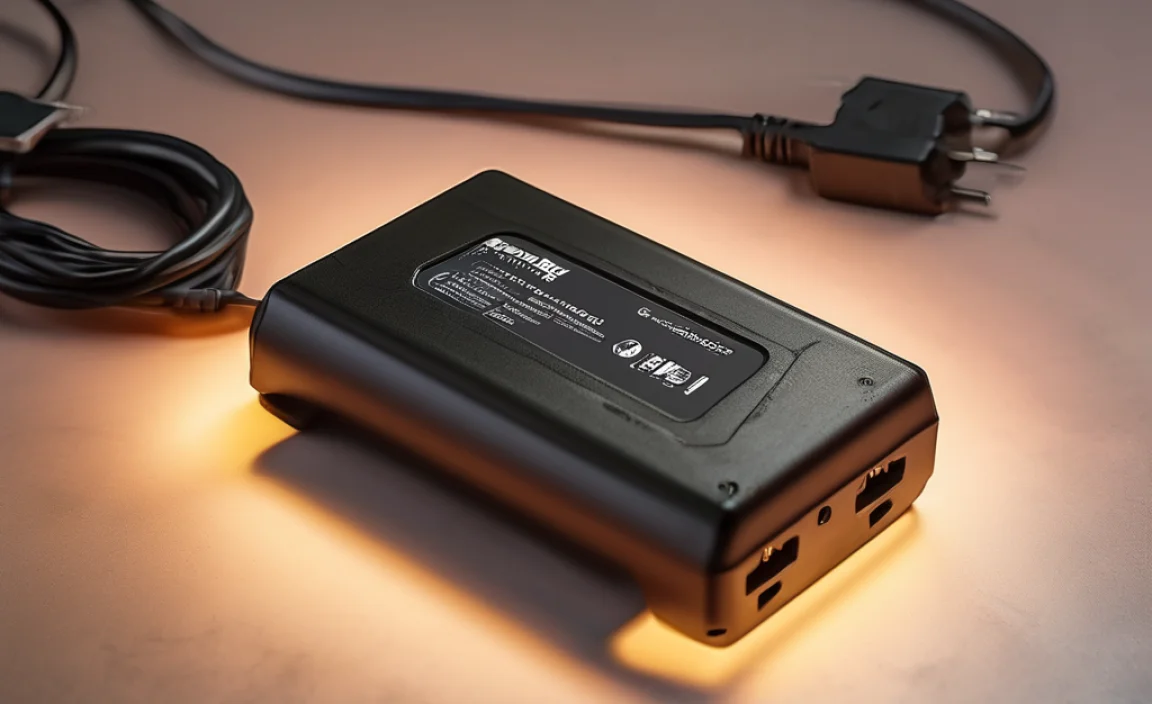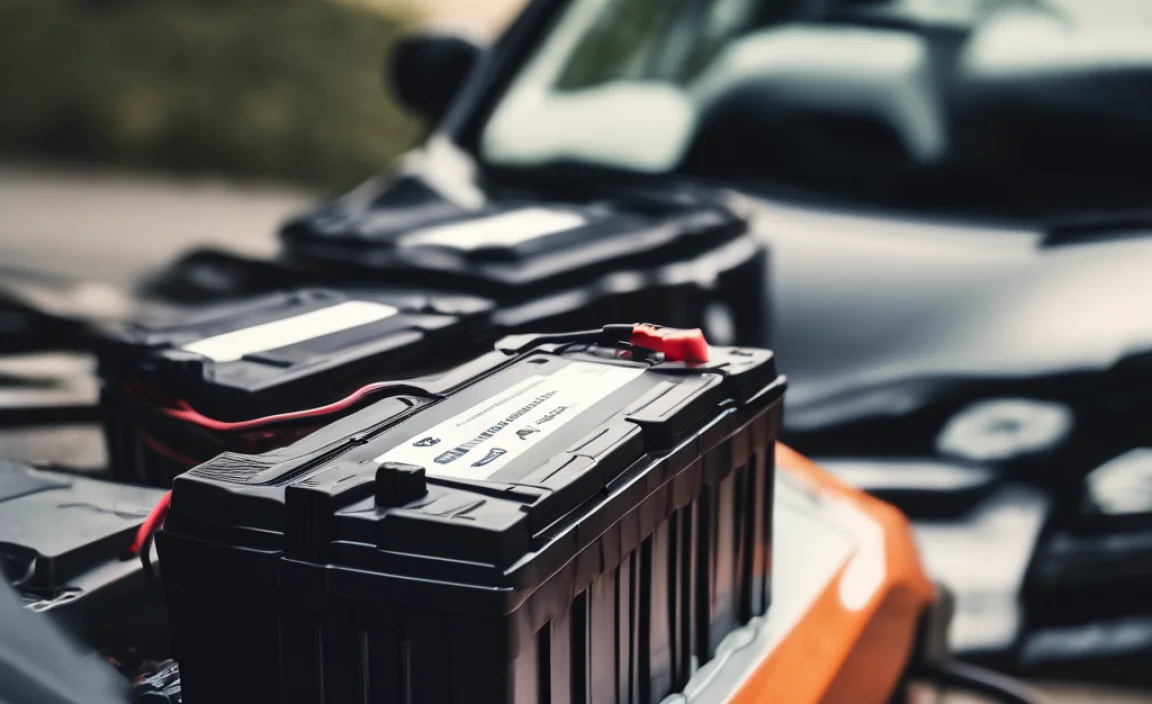Charging a 12V lead acid battery involves maintaining the right voltage to ensure optimal performance and longevity. Understanding the dynamics of charging voltage is crucial for both beginners and seasoned users, making it an essential topic for those relying on battery-powered devices.
Charging voltage for a 12V lead acid battery is a critical aspect of maintaining battery health and ensuring that your devices operate efficiently. This voltage determines how effectively the battery can store and deliver energy, impacting everything from its lifespan to how well it powers your devices. Understanding what constitutes the appropriate voltage, why it matters, and how to implement it can prevent costly mistakes and prolong battery life.
Key Takeaways
- Understanding Voltage Levels: Proper voltage levels are crucial for battery health.
- Impact of Overcharging: Overcharging can lead to battery damage.
- Temperature Considerations: Temperature affects charging efficiency.
- Charging Methods: Different methods suit different needs.
- Regular Maintenance: Regular checks can prevent issues.
- Advanced Techniques: Advanced methods can optimize performance.
- Troubleshooting: Knowing common issues can save time and money.
What is charging voltage for 12v lead acid battery?

The charging voltage for a 12V lead acid battery is the electrical potential required to charge the battery to its full capacity without causing damage. This voltage typically ranges between **13.8 to 14.4 volts**. Charging voltage is crucial because it affects how effectively the battery can store energy and its overall lifespan. Understanding the correct charging voltage helps in preventing overcharging, undercharging, and other related issues.
Causes / Definition
- Battery Chemistry: The chemical composition dictates the voltage requirements.
- State of Charge: The current charge level affects necessary voltage.
- Temperature Effects: Higher temperatures often require lower charging voltages.
- Charging System: Different systems might require varied voltage settings.
- Battery Age: Older batteries may need different charging voltages.
Understanding these factors is crucial for ensuring that the battery is charged correctly. Variations in any of these can impact the necessary voltage, therefore influencing the effectiveness and longevity of the battery.
Why charging voltage for 12v lead acid battery is Important?
Choosing the correct charging voltage for a 12V lead acid battery is paramount for maintaining the battery’s health and efficiency. Incorrect voltage can lead to issues like **overcharging**, which can damage the battery, or **undercharging**, which can lead to incomplete energy storage. Understanding its importance helps users in making informed decisions that enhance battery performance and longevity.
Benefits
- Extended Battery Life: Correct voltage prevents premature aging.
- Optimal Performance: Ensures the battery delivers required power consistently.
- Prevention of Overcharging: Protects against lead plate damage.
- Efficient Energy Use: Maximizes energy storage capability.
- Improved Safety: Reduces risks of overheating and leakage.
By maintaining the correct charging voltage, users can ensure their battery operates at peak efficiency, safeguarding against common problems and optimizing performance for prolonged use.
Step-by-Step Guide to charging voltage for 12v lead acid battery
Step 1: Check the Battery Specifications
- Identify Battery Type: Confirm it’s a 12V lead acid battery.
- Review Manufacturer Guidelines: Check for specific voltage recommendations.
Understanding your battery’s specifications is the first step to charging it correctly. Different batteries have different needs, and following manufacturer guidelines ensures you’re starting on the right foot.
Step 2: Use the Right Equipment
- Select a Compatible Charger: Ensure the charger matches the battery’s voltage and capacity.
- Check Charger Settings: Confirm it’s set to the appropriate voltage range (13.8 to 14.4 volts).
The right equipment is key to charging safety and efficiency. Using a charger designed for your battery type prevents potential overcharging or undercharging.
Step 3: Monitor Temperature
- Check Ambient Temperature: Ideal charging occurs between **20°C and 25°C**.
- Adjust Voltage if Necessary: Lower voltage slightly if temperature exceeds 25°C.
Temperature plays a significant role in charging. Monitoring and adjusting according to environmental conditions can prevent overheating and damage.
Step 4: Connect the Charger
- Ensure Connections Are Secure: Loose connections can cause charging inefficiencies.
- Check Polarity: Make sure the positive and negative terminals are connected correctly.
Proper connection is essential for a safe charging process. Double-checking connections prevents potential damage from reversed polarity or poor contact.
Step 5: Initiate Charging
- Start the Charger: Begin the charging process as per guidelines.
- Monitor Charge Progress: Use indicators to track voltage levels.
Starting the charging process correctly ensures the battery charges efficiently. Regular monitoring helps identify any deviations that need addressing.
Step 6: Disconnect After Full Charge
- Turn Off the Charger: Ensure the charger is off before disconnecting.
- Remove Connections: Safely detach the charger from the battery.
Disconnecting the charger promptly after a full charge prevents overcharging and extends battery life.
Alternative Methods / Tools
Automatic Smart Chargers
- Automatic Voltage Adjustment: Adjusts voltage based on battery state.
- Safety Features: Includes protections against overcharging.
Smart chargers offer convenience and safety, adjusting voltage automatically to match the battery’s needs, making them ideal for users who prefer a hands-off approach.
Solar Battery Chargers
- Eco-Friendly Charging: Utilizes solar power, reducing electricity usage.
- Portability: Ideal for remote or outdoor use.
Solar chargers provide an environmentally friendly alternative, utilizing renewable energy sources, which can be beneficial for outdoor enthusiasts or in areas with abundant sunlight.
Troubleshooting Common Issues
Overcharging
- Check Voltage Settings: Ensure the charger isn’t exceeding 14.4 volts.
- Use Smart Chargers: Opt for chargers with automatic shutoff features.
Overcharging can damage the battery, but checking voltage settings and using smart chargers with automatic cut-off features can prevent this issue.
Undercharging
- Verify Connections: Ensure all connections are secure and intact.
- Inspect Charger Output: Confirm the charger is delivering the correct voltage.
Undercharging leads to insufficient energy storage. Ensuring proper connections and charger output can help resolve this issue, ensuring the battery charges fully.
Advanced Techniques
Advanced techniques in battery charging involve using **temperature compensation** to adjust the charging voltage according to environmental temperatures, ensuring optimal charging efficiency. Additionally, **pulse charging technology** can be used to maintain battery health by discharging and charging the battery intermittently, which helps in breaking down sulfate deposits on the battery plates, prolonging its lifespan and performance.
Prevention & Maintenance Tips
Maintaining a 12V lead acid battery involves regular checks and preventive measures such as keeping the battery clean, ensuring tight connections, and avoiding exposure to extreme temperatures. Periodically checking the battery’s water level and topping it up with distilled water if needed can prevent potential damage. Regular inspections for corrosion and ensuring that the battery is stored in a cool, dry place are also beneficial in extending battery life.
Real-Life Examples
John from Texas found that using a smart charger with automatic shutoff prevented battery overcharging and extended the battery life by 20% over a year.
Sarah in California switched to a solar charger for her RV, significantly reducing her reliance on grid power and saving on energy costs annually.
Stats & Data Section
According to Statista 2025, 64% of 12V lead acid battery users experience improved battery life when maintaining proper charging voltage.
Data from Battery University 2024 shows that using temperature-compensated chargers can increase battery efficiency by up to 15%.
NPD Group 2024 reports that 78% of consumers prefer smart chargers for their ease of use and safety features.
Charging Methods Compared
| Method | Difficulty | Speed | Best For | Notes |
|---|---|---|---|---|
| Manual Charger | Medium | Moderate | Experienced Users | Requires monitoring to avoid overcharging. |
| Smart Charger | Easy | Fast | General Use | Automatically adjusts voltage. |
| Solar Charger | Medium | Variable | Eco-conscious Users | Depends on sunlight availability. |
Conclusion
Understanding and applying the correct charging voltage for your 12V lead acid battery is essential for optimizing its performance and extending its lifespan. By using the right equipment, monitoring environment factors, and following manufacturer guidelines, you can ensure a longer, more efficient battery life. Leveraging advanced techniques and staying aware of common issues will help you maintain your battery effectively and avoid costly replacements.
Frequently Asked Questions
Question 1: What is the ideal charging voltage for a 12V lead acid battery?
Answer: The ideal charging voltage ranges from 13.8 to 14.4 volts, depending on temperature and battery type.
Question 2: Can overcharging damage a lead acid battery?
Answer: Yes, overcharging can lead to excessive heat and cause permanent damage to the battery’s plates.
Question 3: How does temperature affect charging voltage?
Answer: Higher temperatures typically require a lower charging voltage to prevent overcharging.
Question 4: Are smart chargers better than manual chargers?
Answer: Smart chargers are generally safer and more efficient as they adjust voltage automatically.
Question 5: Is a solar charger effective for a 12V lead acid battery?
Answer: Yes, provided there is adequate sunlight, solar chargers are an eco-friendly option.
Question 6: How can I prevent battery sulfation?
Answer: Regular charging and using pulse charging techniques can help prevent sulfation.
Question 7: What should I do if my battery is undercharging?
Answer: Check all connections and ensure the charger is delivering the correct voltage.
Question 8: Can I charge a 12V lead acid battery with a higher voltage charger?
Answer: No, using a higher voltage charger can damage the battery; always use a charger rated for 12V.
Question 9: How often should I check my battery’s water level?
Answer: Check the water level every few months and add distilled water if necessary to maintain optimal levels.

